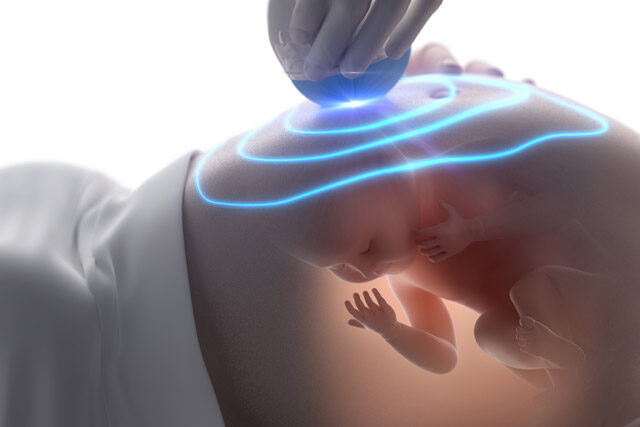The image of breastfeeding created by social media is usually crushed by the reality where there is not only a smiling and sweetly sleeping infant but also blocked milk ducts, breast pain, and nipple soreness. However, none of these things can stop a mom who decides to breastfeed no matter what.
Today we’ll speak about the causes of nipple pain as well as have an in-depth look at what remedies can be used to soothe the unpleasant and painful sensations. If this is what you want and need now, we’ll be glad to help.
Why Do You Have Nipple Pain?
Nipple pain can appear due to cracked or irritated skin in this area. Your nipples may also swell, bleed, change their color to bright reddish, and even peel. Overall, everything that may happen to your skin can happen to your nipples.
What causes such symptoms? If speaking about lactating women, the primary reasons they experience nipple pain include:
- The improper latching of the baby to the breasts;
- Physiological peculiarities of your breasts that influence the correct latch, like a flat nipple or inverted nipple.
- Having your breasts too full can make it harder for the baby to latch.
- Baby has a lip tie or a tongue tie, which interferes with the normal sucking process.
- Wrong body positioning while lactating an infant.
- Wearing bras that don’t fit your size.
- You interrupt breastfeeding while the baby is still sucking.
Overall, it all goes to the physiology of the mother and the baby and the mother’s practical and theoretical knowledge on how to breastfeed.
Should I Continue Breastfeeding?
Pain in the nipples is not a reason to give up lactation. In fact,it’s only a tiny challenge to overcome on the way to successful breastfeeding. If you are determined to cope with this, you’ll have no trouble lactating your kid.
But even if you follow all the breastfeeding essentials and neither you nor your baby have the mentioned physiological peculiarities, you are still likely to have nipple soreness in the first week of breastfeeding your newborn. It’s a kind of adaptation your nipples should go through. After all, there has never been more load on this body part than after you gave birth. So give your nipples and breast some time to adapt and eventually the process will go smoothly.
Despite this, there’s no need for you to suffer and stand pain. There exist numerous natural remedies to help you cope with unpleasant sensations without interfering with the process of lactating a baby.
Natural Remedies for Sore Nipples
Science and personal experience of humanity gave us numerous options for dealing with sore nipples. Most of them are available to all women and can be used without consulting a doctor. Still, if you feel the need to listen to a professional opinion on nipple pain treatment, contact your GP for advice or find a breastfeeding consultant who will help you cope with the causes of your problem.
Breast Milk to the Rescue
Breast milk is known to possess some antibacterial properties. Therefore, you can express your breast milk and gently rub it into the painful areas. Once you are done with that, let the milk air dry and only then put on your clothes.
Repeat this procedure each time before and after breastfeeding a baby. This way, you may not only treat cracked nipples but also prevent this from happening.
Warm Compresses for Soothing Sore Nipples
Breastfeeding experts say that applying a warm compress to the nipples can speed up the healing process and reduce discomfort. To use this method you only need warm (not hot!) water and a soft and clean cloth. Moisturize the cloth, remove extra water and apply it to the painful nipple. Keep the compress there until it cools down to room temperature. You may repeat this procedure several times until you feel better.
Coconut Oil
Coconut oil is a great moisturizing and antimicrobial agent that can soothe sore nipples, reduce itchiness and redness, as well as heal cracked skin. You can use this natural product for gentle massages. Just a small amount of coconut oil is enough to make you feel better.
You may also not worry about your baby’s safety as virgin coconut oil is free from artificial perfumes and doesn’t contain any chemicals.
Aloe Vera
Gentle moisturizing of the nipples can resolve a lot of problems breastfeeding mothers can face. Aloe verareduces inflammation and has antibacterial and antiseptic properties. Along with this, it moisturizes the skin, speeding up recovery.
A lot of nursing women prefer aloe vera for its cooling effect. It’s essential to use clear gel without artificial additives to ensure the baby’s safety.
Correct Positioning
Treating the consequences, you still don’t resolve the cause of the problem. The wrong positioning of the baby during breastfeeding can bring a lot of discomfort for both the mother and the baby. You should find a position that will be comfortable for both of you.
If you still haven’t decided whether it is more comfortable for you to breastfeed while sitting or lying, try different positions until you find the perfect one. A breastfeeding consultant may help with this. One or two consultations will be enough for you to work out a perfect scheme and reduce the unwanted consequences of the wrong positioning.
Hand Expression
One of the reasons for your painful nipples might be the excess milk in your breast, which makes it more difficult for the baby to latch. Also, too full breasts can cause slippage during lactation, adding to the problem.
Hand express some milk before actually feeding the baby to improve the situation and ease the sucking process for the baby. Once you work out your breastfeeding schedule, the problem of excessively full breasts will go awayon its own, taking along nipple pain.
Lanolin – Containing Nipple Cream
If none of the listed options goes well with you, you may try the nipple cream with lanolin. Your nipples heal faster with the cream. Also, it moisturizes the skin and soothes inflammation. You only need a small amount of it to rub into the skin around your nipples.
What if the Problem is Physiological?
The use of nipple pain remedies can be effective in situations where your baby has no tongue tie or lip tie. Otherwise, you may continue challenging breastfeeding. How to know if your newborn has this problem? Just look into the baby’s mouth to see if the band of tissue under its upper lip or tongue restricts the normal movement of the tongue. Usually, such checkups are done right after birth. But if for some reason, your kid missed this, you can call your doctor for an appointment and seek treatment for this problem.
Nipple Pain Remedies – Summing up
Nipple Pain Remedies – The start of breastfeeding rarely becomes a totally positive experience, especially with the first-time-moms. Pain, soreness, and discomfort are the things you should be mentally ready for. On the other hand, it’s essential that you get the knowledge required for proper positioning of the baby during breastfeeding. It’s best to prepare for breastfeeding while you are still pregnant to minimize the problems once the baby arrives.
Sore nipples are extremely disturbing and can make you think breastfeeding is not for you. But it’s not true. Using the advice of professionals and taking good care of your breasts, you’ll overcome the problem and enjoy the process as much as you can. And remember that there are people who can help you adjust and find solutions to the breastfeeding challenges. Don’t refuse their help. Good luck!




